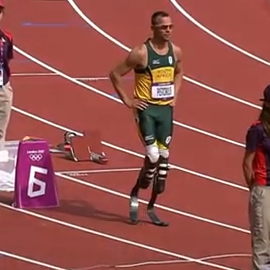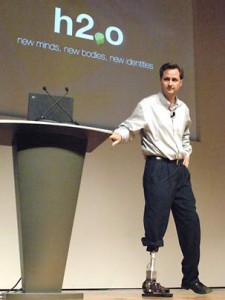Supported by Science, Amputee Races in Olympics
-
-
slice.mit.edu
Filed Under
Recommended

If you like underdogs, the most enduring story of the Olympics is South African runner Oscar Pistorius, the first double-amputee to compete at the Games.
Pistorius was born without a fibula in either leg. When he was 11 months old, both of legs were amputated below the knee. Nicknamed “Blade Runner,” he competes using j-shaped carbon-fiber prostheses and is a four-time Paralympics champion.
The Blade Runner's Olympic story almost never began. In 2008, the International Association of Athletics Federations banned Pistorius from competing in able-bodied competitions after tests showed that he expended 25 percent less energy than able-bodied runners.
Pistorius challenged the ruling, with an assist from Associate Professor Hugh Herr SM '93. Herr assembled a team of biomechanical experts and appealed to the Court of Arbitration in Sport. The group's research showed that Pistorius uses energy at the same rate as other elite runners and his prostheses are no more efficient than human legs, and the court reversed the ban.
Pistorius finishing eighth in his heat during the 400-meters semi-final on August 5.
Herr told The Boston Globe:Herr was also featured in a video documenting Pistorius’s journey that originally aired during NBC’s Olympics television coverage."The scientific evidence we have today does not suggest an overall advantage in the 400-meter race," said Herr. "How anyone could conclude an overall advantage with so little science conducted is speculation. There is not a single data point on the acceleration phase of the race, nor a single data point on running around the curved track with prostheses. In society we cannot ban an athlete from competition because he has a funny-looking body."
Herr's connection to Pistorius extends beyond research. While rock climbing at New Hampshire's Mount Washington in 1982, Herr was caught in a blizzard and spent three nights in -20°F temperatures. Herr suffered severe frostbite, and following the rescue, both of his legs were amputated below the knees.
As head of the Biomechatronics group at the Media Lab, Herr's research focuses on develop technologies and creating robotic systems that help augment human physical capability. His variable-damper knee prosthesis and his active ankle-foot orthosis were named a Time Magazine Top 10 health invention in 2004 and 2007, respectively.








